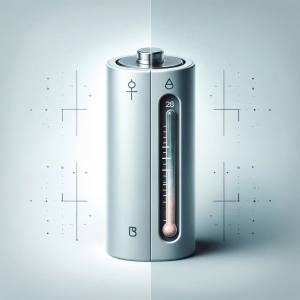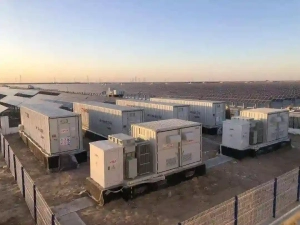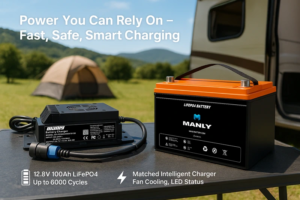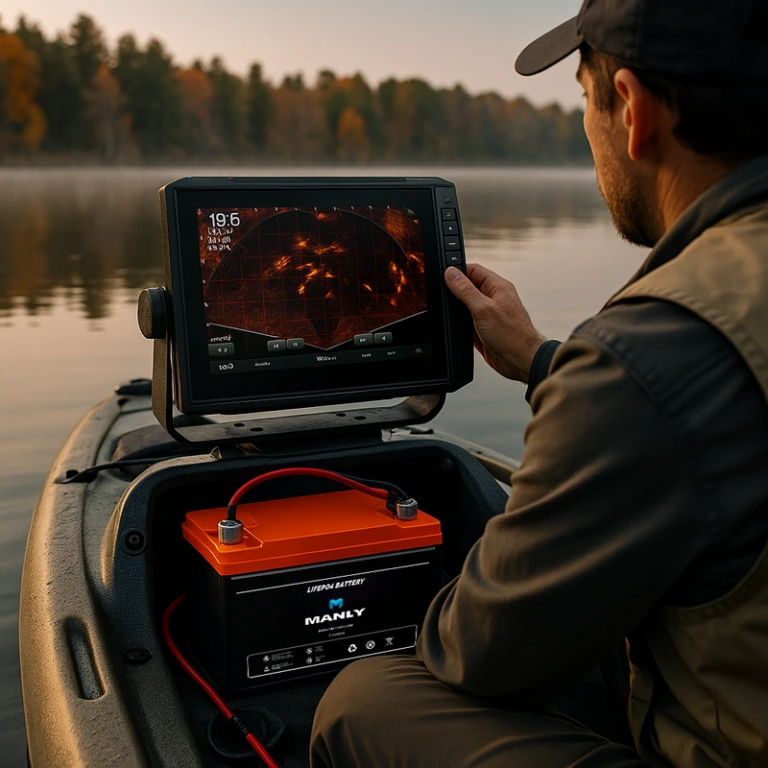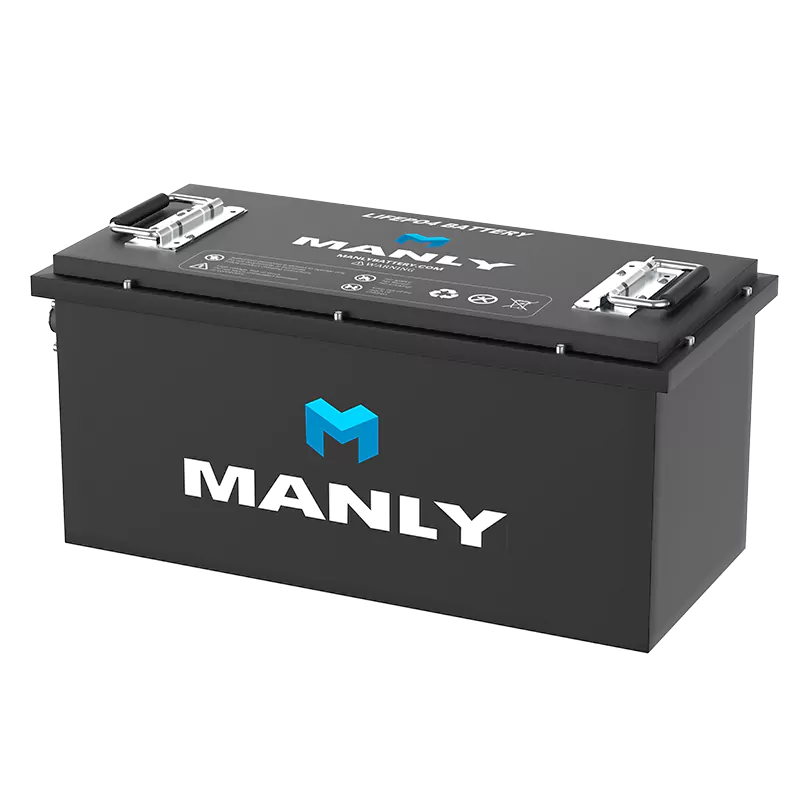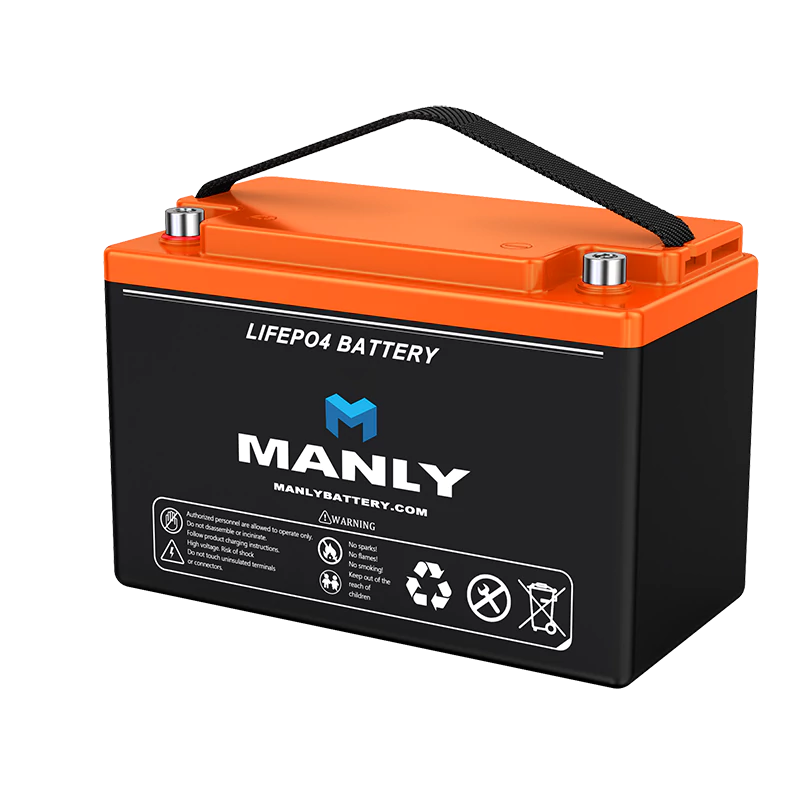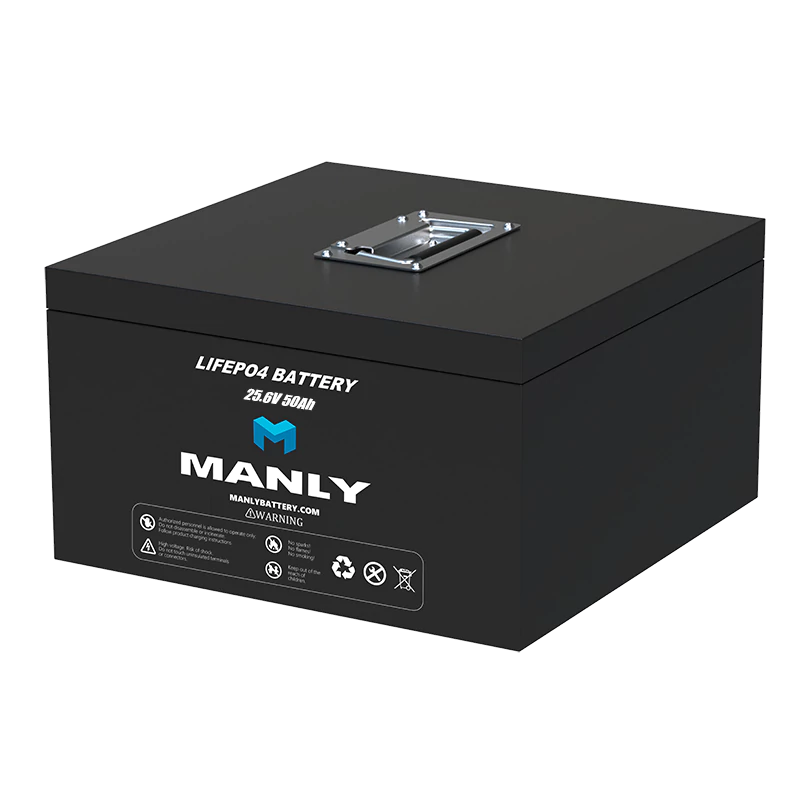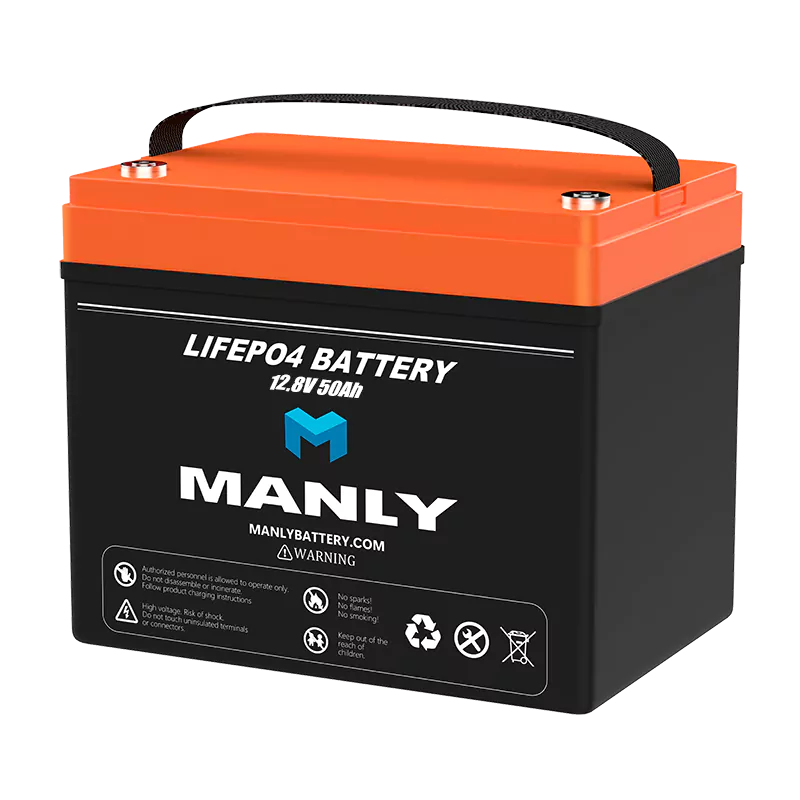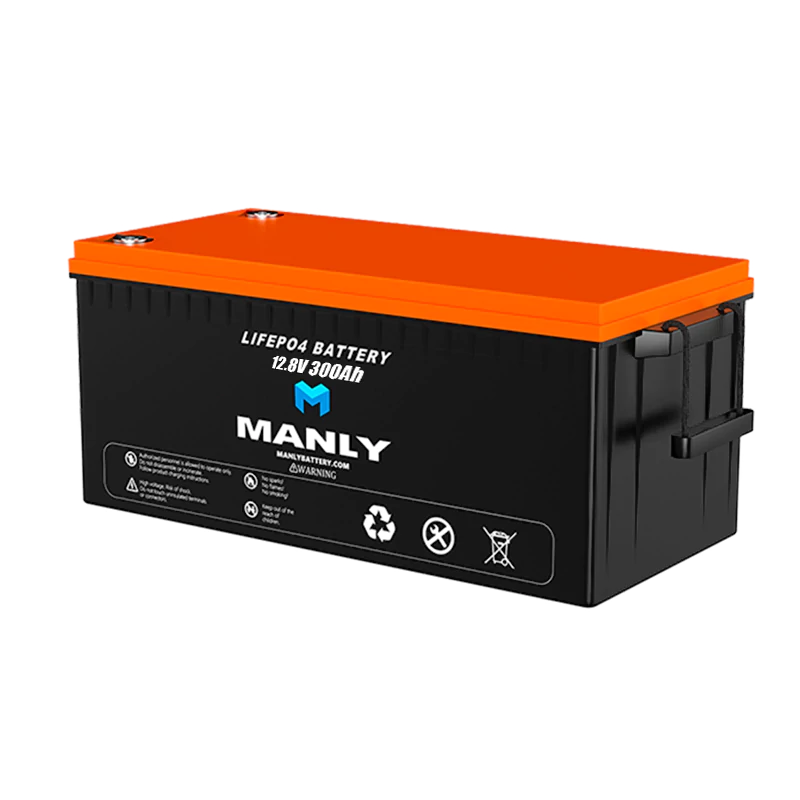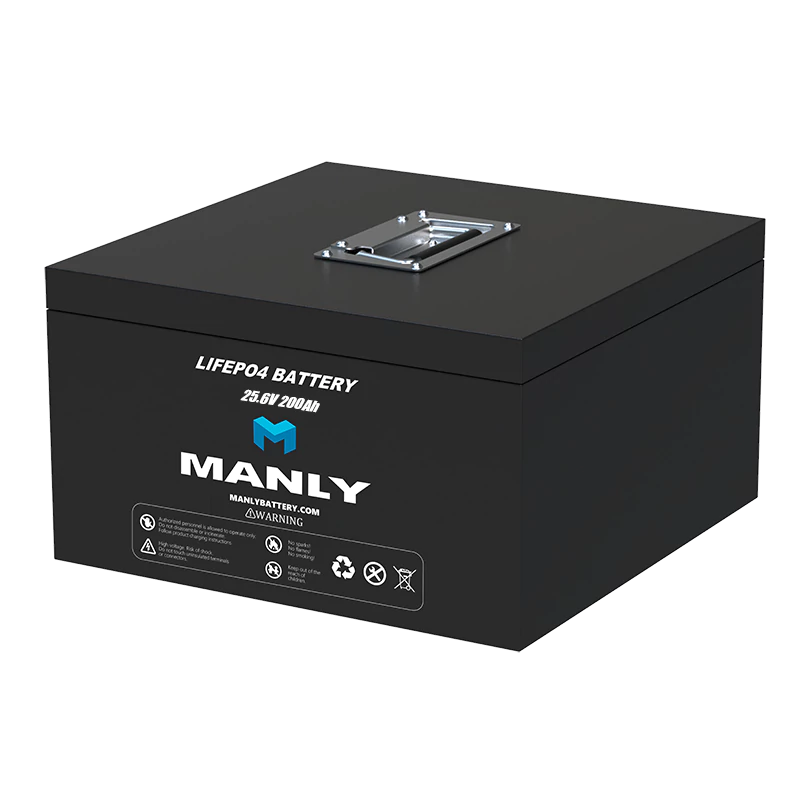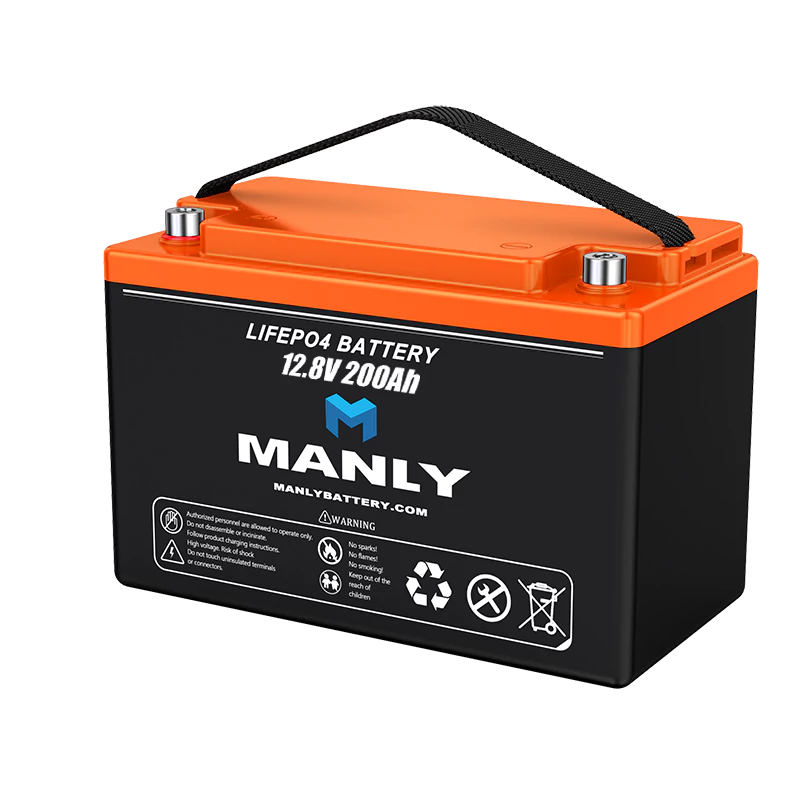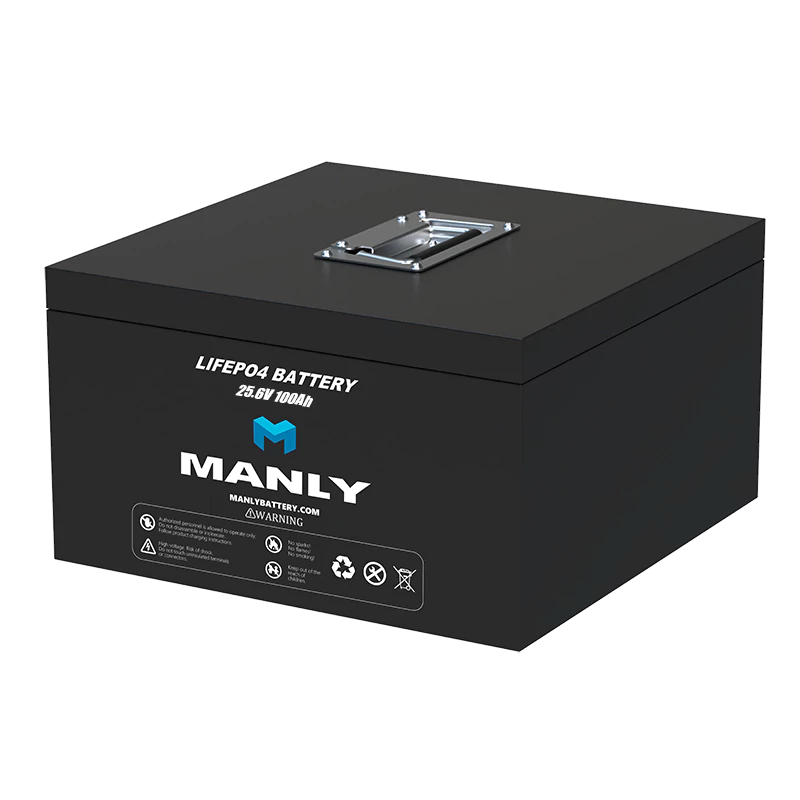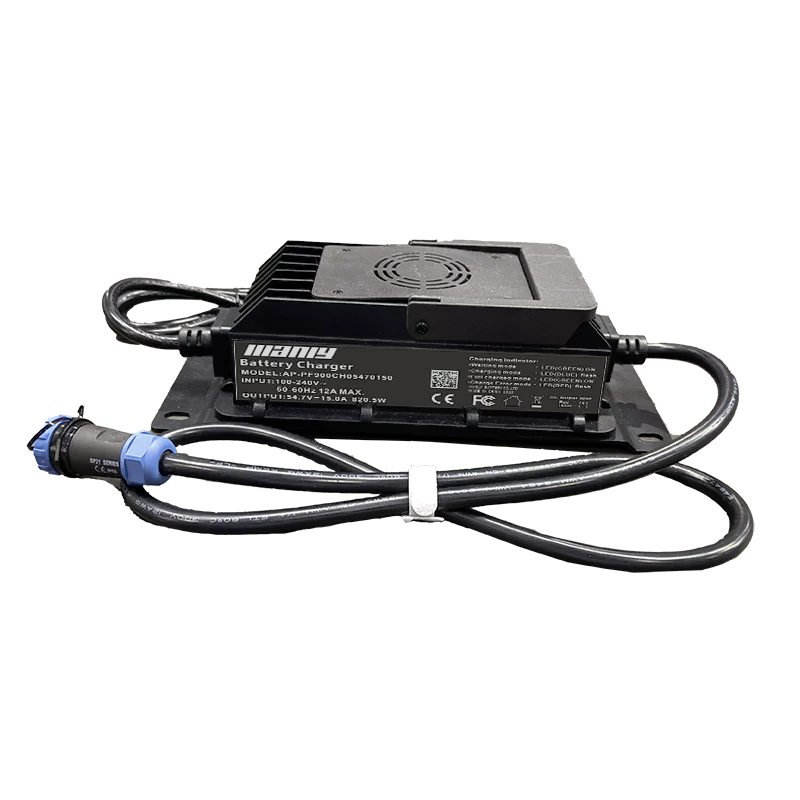Batterie LifePO4 - Tutto ciò che devi sapere
Sommario
- Batterie LifePO4 - Tutto ciò che devi sapere
- Cosa sono le batterie LiFePO4?
- Quali sono le batterie LifePO4 utilizzate?
- Le batterie LifePO4 sono le stesse delle batterie agli ioni di litio?
- Quali sono i vantaggi delle batterie LifePO4?
- Le batterie LifePO4 di montaggio lateralmente: cose da considerare
- Batterie LifePO4: la scelta del litio più sicuro
- Comprensione dello sfiato della batteria: tradizionale vs. lifepo4
- Perché alcune batterie hanno bisogno di sfiato?
- Batterie LifePO4: un'alternativa più sicura
- Affrontare la fuga termica in LifePO4
- Le batterie LifePO4 sono inclini al surriscaldamento?
- Aggiunta sicurezza con valvole di rilascio di pressione
- Scegliere la batteria giusta per il lavoro giusto
- Sistemi di sfiato di pesatura: il raro vs. il normale
- Che dire della longevità della batteria?
- Quanto durano le batterie LifePo4
- Come testare la capacità della batteria LifePO4
- Perché scegliere la batteria MANLY?
Cosa sono le batterie LiFePO4?
Prima di poter esplorare la cavalcata dei benefici che le batterie LifePO4 possano fornire ai loro utenti, dobbiamo prima guardare esattamente a ciò che sono. LifePO4 sta per la batteria al fosfato ionico di litio o semplicemente LFP in breve. Queste batterie sono un tipo di batteria agli ioni di litio completamente ricaricabile, ma che utilizza fosfato di ferro (FEPO4) come materiale catodico primario. Le batterie di litio non sono una novità. In effetti, sono in circolazione da quasi tre decenni. Si sono trovati rapidamente il mezzo più efficiente per caricare dispositivi elettronici più piccoli come i computer portatili e i telefoni cellulari. Come erano benefici come le batterie agli ioni di litio, alcuni sono stati trovati soggetti a surriscaldamento e ci sono state diverse segnalazioni che hanno catturato incendi a causa di bassi livelli di comportamento. Questo è in gran parte il motivo per cui non erano usati per realizzare banche di batterie più grandi per alimentare veicoli e dispositivi più grandi, gli experti hanno scoperto che, se rivestivano le particelle in materiale conduttivo e ridotte le dimensioni, la conducibilità aumenterebbe. Hanno iniziato a usare il fosfato di ioni di litio come materiale del catodo, insieme a elettrodo di carbonio grafitico con sostenuto metallico per l'anodo. Hanno anche modificato la composizione chimica e li hanno resi molto più stabili. E con ciò, è nata l'umile batteria LifePo4.Quali sono le batterie LifePO4 utilizzate?
Contrariamente alla credenza popolare, le batterie al fosfato agli ioni di litio non vengono utilizzate per dispositivi elettronici più piccoli, quindi non aspettarti di trovarle sostituendo presto la batteria dello smartphone. Esistono diversi modi in cui differiscono dalla tua batteria agli ioni di litio standard e ci arriveremo a breve. Per ora, tuttavia, esamineremo alcuni dei modi principali in cui è possibile applicare una batteria LifePO4. Quando rispetto alle tipiche batterie agli ioni di litio presenti nei tuoi dispositivi quotidiani, le batterie al fosfato a ioni di litio hanno una densità di energia molto più bassa, questo le rende ideali per dispositivi e prodotti più grandi che necessitano di più potenza, compresi i seguenti: compresi i segue- Camper e camper
- Veicoli elettronici (EV)
- Carrelli da golf
- Passeggini elettrici
- Barche basse
- Sistemi di energia solare
- Biciclette elettriche
- Moto elettriche
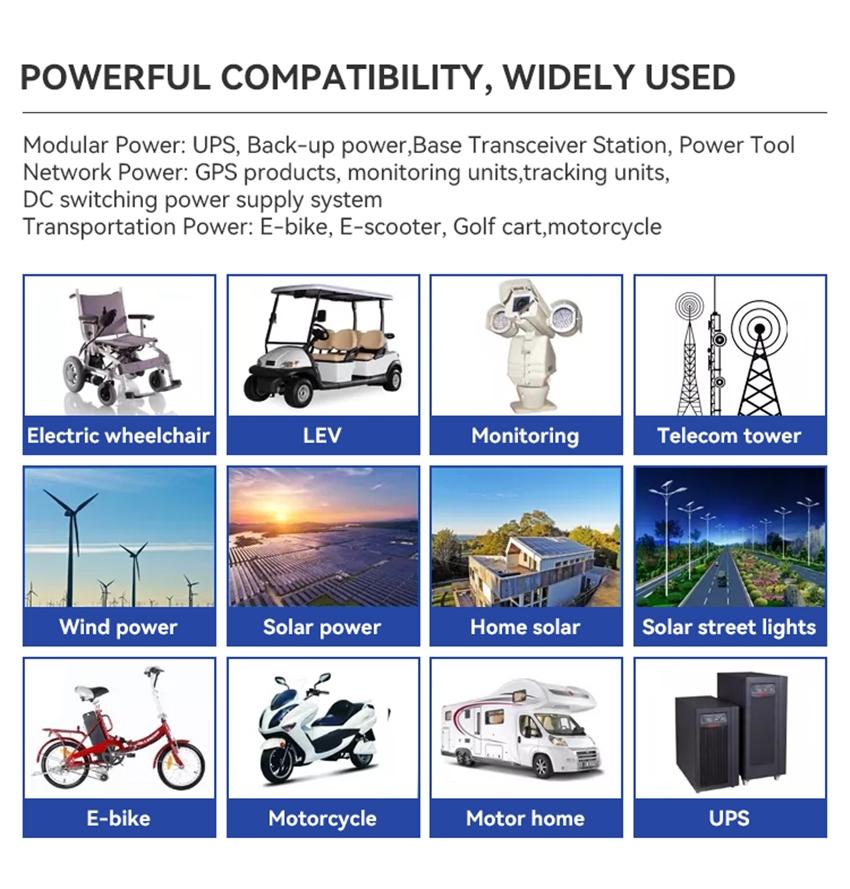
Le batterie LifePO4 sono le stesse delle batterie agli ioni di litio?
Come puoi vedere da quanto sopra, le batterie LifePO4 vengono utilizzate principalmente per oggetti e dispositivi molto più grandi e sono più adatte per i prodotti che richiedono una potenza maggiore. Le batterie a banco di litio sono migliori per dispositivi più piccoli che richiedono meno energia. Ancora una volta, laptop e smartphone e tablet sono tutti perfettamente adatti per le batterie standard agli ioni di litio. Una batteria LifePO4 utilizza una nuova forma di tecnologia per renderli più stabili e molto meno combustibili. Mentre entrambe le batterie sono ricaricabili, presentano cicli di carica molto diversi. Una batteria agli ioni di litio, ad esempio, può presentare un grande ciclo di vita quando caricata, ma non è così impressionante come quella trovata come parte di una batteria LifePO4. I battitori che utilizzano la tecnologia fosfatica offrono cariche molto più lunghe, il che significa che le batterie sono anche più lunghe e richiedono un po 'di eco-litium-litium. Il fosfato di ferro è non tossico, rispetto ai composti chimici presenti all'interno delle batterie agli ioni di litio. In base alle batterie LifePO4 sono più stabili, meno combustibili, richiedono meno carica, più sicure e durano cinque volte più lunghe delle batterie agli ioni di litio.Quali sono i vantaggi delle batterie LifePO4?
In parole povere, le batterie LifePO4 sono una versione nuova e migliorata delle normali batterie agli ioni di litio, con applicazioni leggermente diverse. Come il mondo sembra diventare aumentando le batterie sostenibili e rispettose dell'ambiente, le batterie a ioni di litio sembrano sempre più probabili diventare la norma come parte della vita moderna. Ma ciò che è su LifePo4 che le rendono così benefiche? Ecco uno sguardo a diversi vantaggi chiave delle batterie PO4 agli ioni di litio rispetto alle batterie agli ioni di litio standard:Le batterie LifePO4 sono molto più sicure
Uno dei motivi principali per cui le batterie al fosfato agli ioni di litio sono considerate così popolari dipende dal fatto che sono molto più sicure delle normali batterie agli ioni di litio. Come menzionato, nel corso degli anni abbiamo visto un numero di segnalazioni di batterie agli ioni di litio che si surriscaldano e catturano il fuoco o persino esplodono in alcuni casi. Inutile dire che questo è molto grave e ha avuto conseguenze devastanti per gli utenti. Perché le batterie al fosfato agli ioni di litio utilizzano la chimica del litio più sicura, tuttavia, sono molto, molto più sicure. Una batteria LifePO4 offre stabilità termica e strutturale, il che significa che possono resistere a temperature estremamente elevate e molto uso, senza essere a rischio di combustione. È qui che paga l'acquisto da un fornitore di batterie rispettabile, in quanto non si può correre rischi per quanto riguarda la sicurezza. Le batterie offrono anche temperature autoregolanti, quindi, a temperatura ambiente, rimangono fresche e non sono a rischio di fuga termica, anche con le temperature in aumento o fluttuanti. situazioni. A proposito dell'acquisto da un fornitore di batterie affidabile e affidabile, la batteria al fosfato agli ioni di litio dovrebbe essere considerevolmente più sicura di una batteria standard.Una batteria LifePo4 offre prestazioni fantastiche
Un altro motivo per acquistare batterie LifePO4 è semplicemente il fatto che offrono prestazioni ed efficienza straordinarie. Se sei abbastanza fortunato da procurarsi queste batterie da un fornitore di batterie affidabili e professionali, scoprirai che offrono una vasta gamma di benefici che non avresti mai considerato. Inoltre, anche una batteria di LifePO4 offre una richterning rapida e può raggiungere una ricarica completa entro due ore, e spesso anche a quella di quella. Una batteria di piombo, ad esempio, vedrà un tasso di auto-scarica di circa il 30% al mese. Con le batterie LifePO4, tuttavia, il tasso di auto-scarica è semplicemente del 2% al mese, il che significa che mantengono la loro carica incredibilmente bene. Le batterie di LifePO4 offrono anche uscite di alimentazione costanti, anche quando la carica della batteria è bassa.Le batterie al fosfato agli ioni di litio sono eco-compatibili
Per le persone che sono attenti all'ambiente, le batterie LifePO4 sono estremamente benefiche. Non sono solo ricaricabili, ma soprattutto, contengono anche materiali non tossici, non perdono, in più sono anche riciclabili. il mercato.Piccolo e compatto
Sebbene non sia un vantaggio particolarmente enorme, un altro motivo per cui gli utenti di una batteria LifePO4 sono stati così colpiti da questo particolare gadget è inattivo al fatto che sono piccoli, compatti e leggeri. Una tipica batteria LifePo4 pesa 1/3 di una batteria di piombo, rendendolo più agevole. Non solo, ma poiché sono più piccoli, occupano meno spazio, il che significa che sono più convenienti, specialmente se usati su veicoli più piccoli come forse piccoli pescherecci?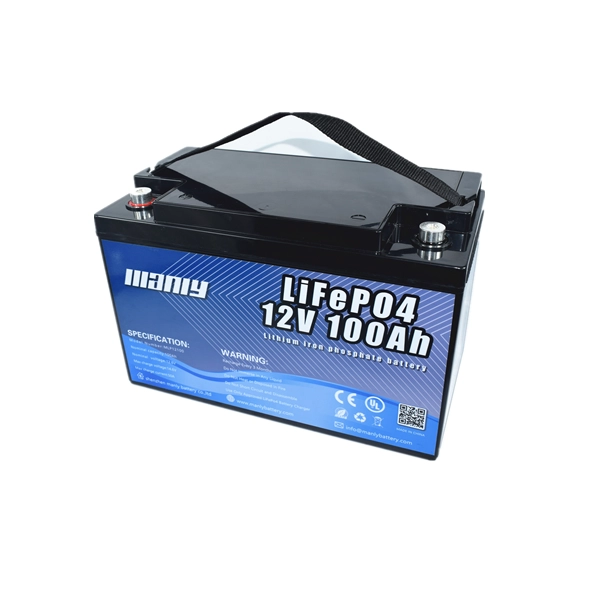
Le batterie LifePO4 di montaggio lateralmente: cose da considerare
Considerando un montaggio laterale per la tua batteria LifePo4? Sebbene questo tipo di orientamento sia fattibile, è essenziale comprendere i fattori critici per garantire la longevità della batteria e le prestazioni ottimali. Ecco una guida veloce:1. Rimani fresco con la gestione termica
È fondamentale mantenere un efficiente meccanismo di dissipazione del calore per le tue batterie LifePO4, non importa come le monti. Soprattutto se collocato dalla loro parte, la strategia di gestione del calore potrebbe aver bisogno di aggiustamenti per contrastare i potenziali problemi di surriscaldamento.2. Affidati a un BMS intelligente
Il sistema di gestione della batteria (BMS) è l'intelligenza della batteria. Supervisiona le operazioni della batteria e lo assicura senza problemi. Quando si cambia l'orientamento della batteria, assicurati che il tuo BMS sia adattabile, offrendo letture precise per prestazioni e robuste funzionalità di protezione.3. Garantire la stabilità solida di roccia
La stabilità meccanica non riguarda solo il montaggio. Si tratta di garantire che la batteria rimanga stabile e sicura, soprattutto se orientata su un lato. Proteggi da potenziali movimenti, vibrazioni o eventuali rischi di ribaltamento per prevenire potenziali danni.4. Attenersi al consiglio dell'esperto
Ricorda sempre: il produttore lo sa meglio! Aderire alla loro guida per quanto riguarda le posizioni di montaggio non è negoziabile. Hanno testato i loro prodotti e offrono approfondimenti su pratiche di installazione ottimali. Evita di diventare canaglia; Potrebbe influire sulle prestazioni della batteria, la sicurezza e persino la sua garanzia. In conclusione, mentre le batterie LifePO4 di montaggio laterale sono un'opzione, è fondamentale avvicinarsi al compito con un'attenta considerazione, garantendo che la batteria fornisca un servizio efficiente, sicuro e prolungato.Batterie LifePO4: la scelta del litio più sicuro
Quando si tratta di sicurezza della batteria, non tutte le batterie al litio sono create uguali. Tra questi, le batterie LifePO4 si distinguono come un'opzione di alto livello. Ecco perché:1. Resistenza al calore:
A differenza di alcune varianti di litio, le batterie LifePO4 hanno una composizione chimica unica che garantisce che non si surriscaldano facilmente. Questo è un grande vantaggio di sicurezza, poiché il calore eccessivo può portare a scenari pericolosi.2. Stabilità in diversi stati:
La somiglianza strutturale tra gli stati caricati e non caricati di LifePO4 garantisce che gli ioni rimangono stabili. Questa stabilità è cruciale, specialmente durante il flusso di ossigeno naturale che si verifica nei cicli di carica o se qualcosa va storto.3. Iron vs. Cobalt:
Il legame nel fosfato di ferro (trovato in LifePO4) è fondamentalmente più forte rispetto alle alternative a base di cobalto. Pertanto, se una batteria è sovraccaricata o danneggiata fisicamente, LifePo4 rimane più resiliente e meno inclini alla rottura, il che potrebbe altrimenti comportare un pericoloso rilascio di calore.4. Sicurezza antincendio:
Un aspetto essenziale del profilo di sicurezza di LifePo4 è che queste celle sono essenzialmente a prova di fuoco. In situazioni come incidenti o cortocircuiti, mentre altre batterie potrebbero accendere o esplodere, LifePo4 rimane calma e raccolta.5. Endurance in condizioni estreme:
Che si tratti di un sole freddo e di paesaggi a fuoco freddo o accidentato, le batterie LifePO4 possono resistere agli ambienti più duri senza compromettere la loro integrità o sicurezza.6. Economeamente e rispettoso:
Come bonus, queste batterie sono scelte verdi. Non sono solo non tossici e non inquinanti, ma anche privi di metalli delle terre rare. In poche parole, se la sicurezza si classifica in cima alla tua lista di controllo e operi in ambienti impegnativi, scegliere le batterie LifePo4 è una mossa saggia. Non solo forniscono affidabilità, ma anche un vantaggio ecologico.Comprensione dello sfiato della batteria: tradizionale vs. lifepo4
Perché alcune batterie hanno bisogno di sfiato?
Le batterie tradizionali agli ioni di litio a volte possono affrontare una condizione pericolosa nota come fuga termica, dove si surriscaldano rapidamente. Ciò potrebbe anche portare a incendi o esplosioni. Per prevenire questi scenari, queste batterie hanno sistemi di sfiato integrati. Queste prese d'aria rilasciano gas e fermano l'accumulo di pericolose pressioni interne.Batterie LifePO4: un'alternativa più sicura
Inserisci le batterie LifePO4, che hanno un bordo distinto in termini di sicurezza. La loro differenza principale risiede nel loro unico catodo di fosfato di ferro. Questa chimica non solo diminuisce il rischio di fuga termica, ma nega anche la frequente necessità di sfiato, a differenza delle loro controparti tradizionali.Affrontare la fuga termica in LifePO4
E se ci fosse una minaccia di fuga termica a causa di problemi come eccessiva ricarica, calore esterno o danni accidentali? Non temere. Le batterie LifePO4 sono dotate di moderni meccanismi di sicurezza. Presentano sofisticati sistemi di gestione delle batterie che tengono d'occhio questi potenziali rischi, assicurando che siano tenuti sotto controllo e riducono la probabilità di eventuali incidenti di surriscaldamento. Sono progettati tenendo conto delle prestazioni e della sicurezza.Le batterie LifePO4 sono inclini al surriscaldamento?
Le batterie LifePO4, note per la loro chimica unica, presentano un livello impressionante di stabilità. Ciò riduce drasticamente la loro probabilità di entrare in fuga termica - uno stato in cui le batterie possono diventare eccessivamente calde. Il beneficio diretto? In genere non producono il tipo di calore o gas che rendono lo sfogamento di una necessità.Aggiunta sicurezza con valvole di rilascio di pressione
Anche se queste batterie di solito non hanno bisogno di sfogarsi, vale la pena notare che alcuni produttori incorporano valvole di rilascio di pressione nel loro design. Perché? Come salvaguardia. Se c'è mai un evento estremo come un grave sovraccarico, queste valvole possono espellere i gas, mantenendo la batteria sicura.Scegliere la batteria giusta per il lavoro giusto
Quando si determina se lo sfiato è essenziale, è fondamentale considerare come e dove viene utilizzata la batteria LifePO4. Una batteria in un'auto elettrica, ad esempio, potrebbe avere nette esigenze di sicurezza rispetto a una nel sistema energetico stazionario di una casa.Sistemi di sfiato di pesatura: il raro vs. il normale
In alcune rare e difficili condizioni, se una batteria LifePO4 deve affrontare abusi o disfunzioni, i sistemi di sfiato potrebbero entrare in gioco. Ma ricorda, questi casi sono eccezionali, grazie agli attributi di sicurezza integrati della batteria. Sul lato di ribaltamento, quando pensiamo ai sistemi di energia domestica, le batterie LifePO4 di solito esistono nei sistemi sigillati. Lo sfiato non è in genere all'ordine del giorno, rendendoli una scelta ideale per le esigenze energetiche domestiche.Che dire della longevità della batteria?
Ecco la ciliegia in cima: le tradizionali batterie agli ioni di litio che sfogano spesso possono vedere una durata abbreviata. Tuttavia, le batterie LifePO4 non sono nel settore dello sfiato frequente. Di conseguenza, tendono a godere di un ciclo di vita più esteso ed efficiente. In breve, se stai cercando una batteria che combina efficienza, sicurezza e longevità, Lifepo4 si distingue tra la folla.Quanto durano le batterie LifePo4
Qual è la vita tipica di una batteria LifePo4?
Le batterie LifePO4, se gestite a destra, possono servirti costantemente per un arco di 5-10 anni. Vale la pena sottolineare che la longevità di queste batterie di fosfato in ferro di litio dipende in gran parte da come si prendono cura. Per queste batterie, l'adge "trattale nel modo giusto e ti tratteranno bene" è vero. Il sovraccarico è un modo infallibile per farla breve.Cicli di carica scricchiolio per batterie LifePo4
Le batterie LifePO4 vantano con orgoglio un notevole 3000-5.000 cicli di carica con una profondità di carica dell'80%. Solo per metterlo in prospettiva, altre batterie comuni come quelle di piombo-acido arrivano solo a circa 1.000 cicli di carica. E quando parliamo di un "ciclo di carica", ci riferiamo al processo completo in cui una batteria viene caricata al massimo e quindi scaricata completamente. È essenziale, è essenziale ricordare che diversi fattori possono allungare o ridurre il numero di cicli di carica che una batteria può passare. Quindi, sii sempre in know. Una caratteristica straordinaria delle batterie LifePo4 è la loro più lenta velocità di esaurimento. Potrebbero avere un prezzo iniziale più ripido rispetto ad alcuni altri tipi di batterie, ma il valore a lungo termine che forniscono è imbattibile.Zooming Out: la durata della vita delle batterie al litio generale
Le batterie al litio, nella loro miriade di forme, possono durare da solo un paio d'anni a un decennio impressionante o più. Quelli più economici del budget potrebbero darti ovunque da 500 a 3.000 cicli di vita. Al contrario, le batterie del fosfato di ferro al litio d'élite (LFP) possono offrire una sbalorditiva cicli da 3.500 a 4.000+. Le condizioni di archiviazione contano molto. Per la massima longevità della batteria, conservali sempre in luoghi protetti dalla luce solare diretta, dal calore e dall'umidità. E sì, quando è il momento di succhiare la batteria, attenersi sempre alle linee guida fornite dal produttore. Evita di sovraccaricare e diffidare di qualsiasi configurazione che non sembri giusto. Una batteria ben mantenuta non è solo una durata; Si tratta di massimizzare il valore per ogni dollaro speso.Come testare la capacità della batteria LifePO4
Comprendere le basi:Quando si determina la capacità di una batteria LifePO4, ci sono approcci standard che la maggior parte degli utenti seguono. In genere, inizia caricando completamente la batteria, quindi scaricandola fino alla tensione di taglio. Anche se le specifiche della batteria LifePO4 menzionano spesso una carica di carica standard e una corrente di scarica di 0,5 ° C (il che significa che una batteria da 100 ah dovrebbe essere testata usando 50 AH), è fondamentale sapere che la capacità della batteria LifePO4 non è influenzata dalla corrente di scarica. Quindi, non sei destinato a utilizzare solo 0,5 ° C per i test. Per le batterie più grandi, come l'LF280N (280ah), la creazione di un ambiente di test di 140A può essere impegnativo.Metodo 1: test dell'applicazione del mondo reale
Come funziona:Utilizzare l'attrezzatura come carico per valutare la capacità della batteria.Pro:Rapido, economico.Contro:Leggero margine di errore.Passi da seguire:- Caricare completamente la batteria.
- Collegalo al dispositivo di carico.
- Notare il tempo da quando il dispositivo inizia fino a quando l'alimentazione della batteria non si riduce.
- Usa la formula:Capacità della batteria = Apparecchiatura corrente di funzionamento X Tempo di funzionamento.
Metodo 2: misurazione del misuratore utilizzando un tester di capacità di carico fittizio
Come funziona:Questo tester fornisce una misurazione più precisa della capacità della batteria.Passi da seguire:- Assicurarsi che la batteria sia completamente carica.
- Collegalo al tester di capacità di carico fittizio e inserisci i parametri di caricamento.
- Una volta che la batteria colpisce il taglio, leggi le misurazioni del tester.

